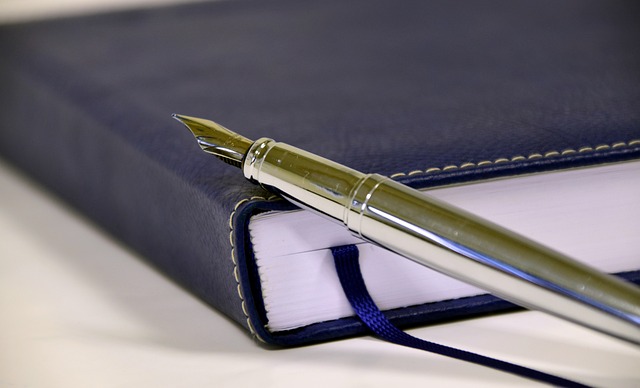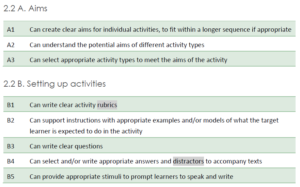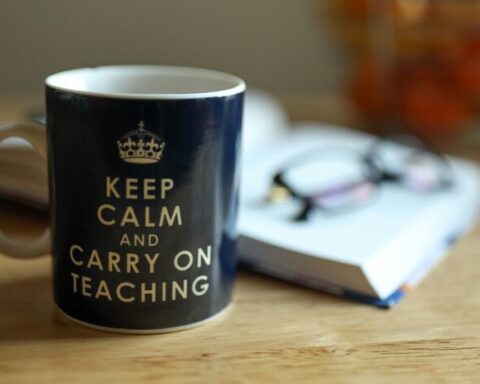As teachers, we start writing language learning materials from very early in our careers, sometimes even from day one. It could be slides to introduce a topic, or worksheets to go with songs… But how many of us have had any training in writing materials, and how do we become better at it?
If your background is anything like mine, you learnt how to improve your materials by trial and error. I would create something and use it in class. Then, I’d realise all the things that were wrong with it – or all the things I should have thought about before I created it.
Sometimes these were seemingly very simple:
I didn’t number the questions in an exercise, so I had to read out the whole sentence for learners to know which one I was talking about in feedback.
Sometimes they went deeper:
I hadn’t realised that one of my learners knew nothing about films and wasn’t interested in them at all. So she had no background knowledge to build on when using the week’s worth of materials I’d created to help learners discuss films and write reviews of them.
Honing my materials writing skills
Over time, I gradually improved the materials I wrote. I joined the IATEFL Materials Writing Special Interest Group (MaWSIG) and attended their events. This helped me learn more about how to lay out materials to help learners navigate them more easily. It also helped me create effective multiple-choice questions, and write useful teacher’s notes for myself and others.
You can find the MaWSIG events page here: https://mawsig.iatefl.org/events
Besides, I started reading books published by ELT Teacher 2 Writer, with such helpful titles as How to write reading and listening activities and How to write pronunciation activities. These books are no-nonsense, step-by-step guides to creating effective materials. I really noticed a difference in my own materials once I started following these tips.
All of their books are listed here: https://eltteacher2writer.co.uk/our-books
Next I completed the NILE (Norwich Institute for Language Education) module in Materials Development for Language Education for my MA. You can also do the module stand-alone, without committing to an MA. That course introduced me to the theory behind materials development. It taught me how to analyse materials to learn what makes them effective. What’s more, I got feedback on my materials for the first time as part of the module’s MA assignments.
Discovering competency frameworks
When it came to writing my MA dissertation, I wanted to bring together what I’d learnt from the Materials Development and Teacher Training modules I’d completed. Inspired by a talk by Denise Santos at IATEFL Belfast in 2022, I decided to create a competency framework for language learning materials writing.
Competency frameworks are structured collections of characteristics required for effective performance in a job (in this case writing effective language learning materials). These characteristics can be observed in the real world, measured against accepted standards, and improved via training and development.
Before I wrote this framework, there were frameworks for teaching, teacher training and academic management, but not for materials writing. This is despite the fact that materials are incredibly influential in language teaching, both on teachers, in terms of their professional development and the way that they teach, and on learners, in terms of what is taught and the way it might influence their perceptions of the world.
My own competency framework
My framework is designed to be a starting point in deciding what might be useful for you to develop and/or learn about to get better at writing language learning materials. The whole framework is available for free here: https://bit.ly/materialsframework
It is divided into three sections:
- Background knowledge: developing your knowledge of theory and methodology to inform your materials writing
- Creating materials: developing practical skills for the actual writing of materials
- Professional skills: developing other skills beyond the actual writing to enable you to develop materials alone and with others
Each section contains a number of categories and sub-categories containing the actual competencies. All key terms are highlighted and defined in a glossary at the end. Here are examples of competencies from Category 2.2 Activity design:
Although there is currently no specific guidance for how to help you develop in each of these areas, this is something I hope will be developed in the future to accompany the framework. There are ideas at the beginning of the framework document to give you guidance on how you might be able to use the framework.
Final thoughts
I hope you find the framework useful in developing your own materials writing skills. Please let me know how easy you’ve found it to use, how you think it might be developed further in the future, and how we could create support materials to accompany it. I would also like to get it translated into other languages, as I think it could be useful beyond English Language Teaching. If you’d like to help with this, please let me know.
I look forward to seeing how my framework develops and grows now it’s out in the real world!
***
If you enjoyed this article, you might also be interested in Kirsten Waechter’s post on the new CEFR framework as well as this interview with ELT Teacher 2 Writer author Sue Kay.

Sandy Millin
Sandy is an ELT teacher trainer, consultant and methodology writer based in Reading, UK. She is the creator of the Take Your Time DELTA courses for Cambridge DELTA Module 1 and Module 3 preparation (www.takeyourtimedelta.com). She blogs at https://sandymillin.wordpress.com/







